Let’s get one thing clear from the start: if you live in North America, the Ruark R1’s DAB and DAB+ tuners are about as useful as a monocle in a boxing match. This is strictly an FM and Bluetooth affair — but what an affair it is.
The Ruark R1 Mk4 Bluetooth Radio isn’t trying to be a party speaker or an AI assistant disguised as a hockey puck. It’s a high-quality tabletop radio for grown-ups — the kind who appreciate real knobs, real materials, and the kind of sound that doesn’t shriek like a caffeinated TikTok influencer.
With a heritage in proper hi-fi loudspeakers, Ruark knows how to squeeze real sound out of a small box. The R1’s handcrafted cabinet and custom neodymium NS+ driver aren’t just for show — they deliver an uncommonly natural tone and shockingly rich bass for something that looks like it should be reciting Churchill speeches in a smoking jacket. Add a Class A/B amplifier and adaptive EQ, and you get a radio that sounds glorious whether you’re spinning jazz at low volume or blasting NPR like it’s Disturbed live at the 9:30 Club.
If you’re space-challenged — maybe your nightstand is already battling a lamp, a nook, and a pile of “to-read” guilt — the R1 makes an elegant, sonically satisfying solution. Ideal for a bedroom, den, reading nook, or even your desk, if you’ve finally decided the company-issue plastic speaker just isn’t cutting it.
The Ruark R1 isn’t cheap, but then again, neither is taste.

Why Settle for Beige? Ruark R1 vs. the Usual Suspects in the Tabletop Radio Turf War
Of course, Ruark isn’t the only one fighting for a spot on your shelf. Tivoli Audio, Bose, Sonos, and Bluesound all have skin in the game — each with their own blend of wireless tricks and lifestyle charm. But aside from Tivoli, which finally seems to have figured out that color and industrial design matter to people who don’t live in an Excel spreadsheet, most of the competition leans either too clinical, too plasticky, or too app-dependent.
That’s where Ruark stands out — a bit of an outlier, and all the better for it. For those of us who will always be outliers — allergic to tech that feels like it’s trying too hard — the R1 hits the sweet spot. It’s practical without being dull: FM radio for when the internet goes on strike, analog inputs for your dusty old iPod or cassette deck (don’t judge), a USB-C port that actually charges your phone, and hi-res Bluetooth streaming for when you’re feeling fancy. No subscription fees, no firmware tantrums, just a solid, great-sounding radio that happens to look like it was designed by someone with taste and a soul.

Features That Actually Matter (Because Your Wi-Fi Speaker Isn’t Helping)
The Ruark R1 Mk4 isn’t trying to overwhelm you with gimmicks or pretend it’s a home theater in disguise. It’s refreshingly honest — a compact, beautifully designed tabletop radio that’s loaded with real-world features that actually make sense. At $399, it’s not cheap. But it’s also not trying to be. It’s trying to be good. And mostly, it succeeds.
First, the sound: Ruark leans on its hi-fi heritage here, building the R1 around a Class A/B linear amplifier — the kind usually reserved for actual speakers, not radios pretending to be lifestyle ornaments. Paired with their custom NS+ full-range neodymium driver and a properly damped polymer cabinet, it delivers audio that’s smooth, natural, and surprisingly full-bodied for something barely taller than a paperback.
The adaptive EQ keeps things balanced whether you’re whispering NPR over breakfast or blasting Bowie while folding laundry. And for those who still believe in adjusting their own tone (you rebels), bass and treble settings are adjustable too.
Despite the DAB and DAB+ tuners being decorative features in North America (unless you moonlight as a European radio pirate), FM reception is solid and multiregional — covering the U.S., Japan, Korea, and the UK should you ever feel like taking your R1 on a world tour.
Bluetooth is high quality and rock-solid, and the USB-C port is a welcome touch — not only for charging your phone, but for shuffle playback of stored music files. You also get an analog input (switchable), a proper headphone output that remembers your last volume setting (bless), and a real-time clock with battery backup — for when the power blinks and you don’t want to explain to your partner why the alarm never went off.
Speaking of which, dual alarms and a sleep timer make this an excellent bedside radio, and the OLED display auto-dims so you won’t feel like you’re sleeping next to a small landing strip.

Topping it all off is the intuitive RotoDial controller, which is tactile and logical — a rare combo these days — plus an optional remote if you’re the sort who prefers buttons over standing up. Presets let you save 8 stations per band, and the UI won’t insult your intelligence, with multilingual support for 14 languages and none of them requiring a software degree to navigate.
At just 3.3 lbs (1.5 kg) and measuring under 7 inches (175 mm) high × 5.1 inches (130 mm) wide × 5.3 inches (135 mm) deep, the R1 slips neatly into a kitchen corner, bookshelf, or nightstand — anywhere you want real sound without it screaming “I bought this on a whim.”
Setting Up Without the Circus, Listening Without the Hype
Setting up the Ruark R1 is refreshingly straightforward — no app gymnastics, no endless firmware updates that fail halfway through, no “helpful” voice assistants butting in uninvited. Just plug it in, connect your phone via Bluetooth if you want, or twiddle the RotoDial to scan FM stations like a civilized human being. The OLED display is crisp and auto-dims so you won’t feel like you’re sleeping next to a mini nightclub.
For testing, I paired the R1 with an iPhone SE, Apple iPad Pro, MacBook Pro, and a trusty pair of Grado SR-80x headphones — the kind of gear that doesn’t forgive sloppy audio. The Bluetooth connection stayed rock-solid across all devices, delivering hi-res streaming without hiccups.
Once you’re up and running, the sound punches well above what its compact size might suggest. The custom NS+ neodymium driver and Class A/B amplifier combine to produce a sound that’s clear, natural, and surprisingly full-bodied — with bass that doesn’t just rattle the cabinet but actually adds warmth and depth. The adaptive EQ means the R1 adjusts itself for optimal sound whether you’re whispering a podcast at 20% volume or blasting classic rock at full tilt.
For audiophiles worried about losing control, adjustable bass and treble let you tweak the tone, but honestly, the R1’s default settings already deliver a balanced, engaging listen. The headphone jack is a blessing for late-night listening — it remembers your last volume, so you won’t wake the house with a surprise blast.

FM Radio Isn’t Dead — It’s Just Been Ignored by People Who Don’t Know What a Good Tuner Sounds Like
Before you get your sock drawer all messed up over that — nobody’s claiming the Ruark R1 is pulling in stations like a Magnum Dynalab FT-101A or a lovingly restored Sansui or Kenwood analog beast from the golden age of hi-fi. Let’s be reasonable.
But here’s the thing: in the real world — specifically rural Pennsylvania, coastal Florida just south of Vero Beach, and even backroads Virginia — the R1 holds its own. I picked up college stations like Dickinson College’s WDCV in Carlisle, PA without any drama, and a variety of local FM signals came through clear and steady. That’s more than I can say for half the “smart” speakers that panic when your Wi-Fi coughs.
If you live in an area with solid FM infrastructure — or better yet, where actual humans still curate playlists and speak between tracks — the R1 becomes more than a decorative object. It’s a reminder that radio can still surprise you, comfort you, and sometimes even teach you something between the ads for car dealerships and lost pets.

Bluetooth Without the Bitrate Guilt Trip
Bluetooth audio on most compact speakers usually feels like a consolation prize — “Hey, at least it connects.” But the Ruark R1’s Bluetooth implementation is refreshingly competent, especially if you’re not expecting LDAC or aptX HD levels of wizardry. Using TIDAL and Qobuz on an iPhone SE, iPad Pro, and MacBook Pro, the stream was clean, stable, and — most importantly — listenable at length.
Whether it was Jason Isbell’s Southeastern, Ella Fitzgerald’s Song Books, or Dolly Parton crooning alongside Miley Cyrus in one of those genre-defying duets, the Ruark R1 doesn’t just play your music — it exposes it. The differences in recording quality from one album to the next are obvious, sometimes brutally so. Switch to Kraftwerk’s Computer World and suddenly you’re deep in vintage synth textures. Cue up Lana Del Rey and you get the smoky melancholy, the layered reverb, the whole dreamy cocktail — just without the bloat.
That’s the R1’s trick: it doesn’t overinflate or oversimplify. The bottom-facing bass port keeps the low end punchy but controlled, never resorting to cabinet-rattling theatrics. It won’t fake a subwoofer, but you won’t miss one either — especially in nearfield setups. There’s not a huge soundstage, but what’s there is wide enough to feel immersive if you’re not miles off-axis.
Vocals come through with clarity and texture, with just enough sparkle on top to keep things interesting — but this is not a bright speaker. No artificial zing to trick you into thinking something sounds “hi-fi” when it’s just hyped treble.
In short: if your taste leans more toward Lana than Limp Bizkit, or you’d rather spend an evening with Isbell than Disturbed, the R1 will reward you. If you want headbanging levels of output and bass that makes your windows tremble, maybe keep scrolling.
It’s not replacing your dedicated DAC and amp stack, but for casual streaming in a kitchen, office, or small den, it’s far more satisfying than it has any right to be.

The Bottom Line
I’ve had the Bluesound Pulse Mini 2i in my kitchen for over three years. It’s built like a tank, can survive daily abuse, and has the kind of room-filling power that makes it feel like overkill for a home office or bedroom. It’s got great integration with Roon, the best internet radio access of the bunch, and plenty of punch. But — and this matters — it’s not subtle. The midrange can get a bit woolly, and the bass occasionally steps on the rest of the mix like a drunk guy at karaoke who thinks he is Bon Jovi. Better for volume than nuance.
Then there’s the DALI KATCH G2, which I still consider one of the best portable Bluetooth speakers around. It looks like something Dieter Rams would’ve designed after a glass of schnapps, and it sounds like a speaker twice its size. Strong bass, clean treble, easy to use, and portable enough to follow you from the deck to the dock. But here’s the catch — it’s now $750 on Amazon. That’s $150 more than when we first reviewed it. I still love it, but at that price? It starts to feel less like a bargain and more like DALI cashing in on good design and inflation denial.
The Ruark R1 is a completely different beast. It’s not trying to be portable. It doesn’t stream over Wi-Fi or pretend to be a Swiss Army speaker. It’s small, elegant, sonically refined, and deeply rooted in old-school audio values — with just enough modern features (USB-C, Bluetooth, alarms, analog input) to make it useful in the 2020s. It’s the radio you buy because you actually care about how FM and Bluetooth can sound in a small room, not because you want to yell at Alexa while flipping orange zest pancakes.
It won’t replace your Pulse Mini 2i in a big room, and it’s not going to beat the KATCH G2 in terms of mobility. But if you’re short on space and long on taste, the Ruark Audio R1 might just be the most satisfying thing you’ve ever put on a nightstand — aside from your dog-eared copies of No Country for Old Men or American Tabloid.
The Ruark R1 isn’t going anywhere — it’s locked into nightstand duty between the Bourgie table lamp and a dog-eared paperback, the kind of company that won’t blow up your life or land you in county lockup. It just sounds right, night after night.
Where to buy: $399 at Ruark | World Wide Stereo
Related Reading:
- We Are (Still) Marshall: Kilburn III Portable Bluetooth Speaker Cranks Style And Sound To 11
- Tivoli SongBook Max Speaker (New.ordinary Edition): Because Your Eames Chair Needed A Soundtrack
- Ruark Wants You To Keep Enjoying CDs With Their R-CD100 Transport: Preview
- Ruark’s R610 Music Console & Sabre-R Bookshelf Speakers Might Be All You Need In 2024
- Review: Brane X vs. Soundboks Go vs Devialet Mania Portable Bluetooth Speakers








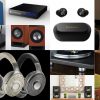




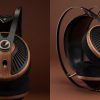

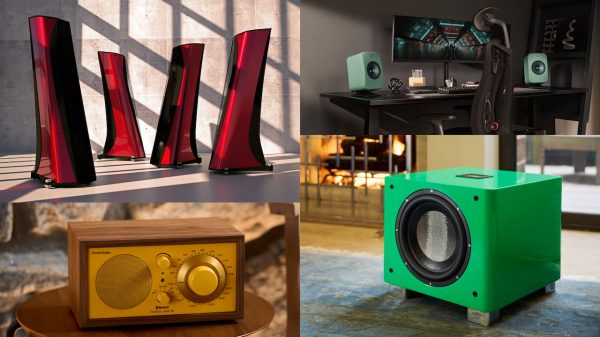
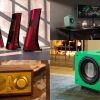
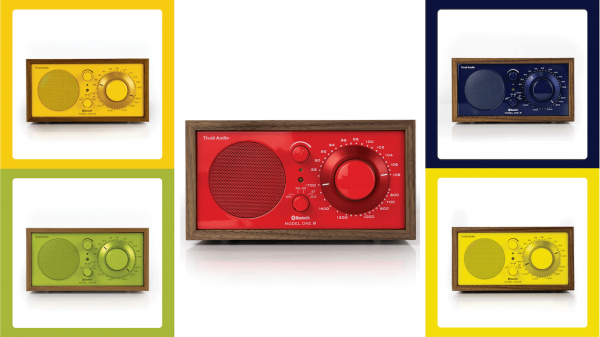

















Anton
June 4, 2025 at 11:22 am
Solid review and wonderful way of making something as pedestrian as a tabletop radio interesting.
FM radio still matters even if most of these stations have digital channels.
Are you reviewing other Ruark models?
Interest piqued.
Ian White
June 4, 2025 at 11:31 am
Anton,
Appreciate the feedback and kind words.
I grew up in radio stations because my father was a fixture on Canadian radio (while running a pizza company and media business) for 27 years, so I love FM/AM radio to my core. I had a radio show in college and I just appreciate it.
I also pay for Sirus/XM in the car because I spend a lot of time on the road and need my NHL Network and ‘80s on 8 daily.
The R1 doesn’t have the impact of the DALI or Bluesound but I just like how it sounds overall and the industrial design. The clock is also kinda novel as we all use our phones now for that purpose.
I’m reviewing one of the larger tabletop Ruark systems and it’s really special.
More to come on that front.
IW
David
June 4, 2025 at 3:11 pm
Ian,
The seems like a good option in the small radio category. Though, I have always been enamored with and still prefer the design of the Tivoli radios. So many options omit AM radio. I think that is a mistake. Why not give us the option?
I bought my dad a C. Crane CC radio (AM,FM,HAM,DX but no Bluetooth) which he really enjoys as it is his only avenue to music and news beyond the speakers on mom’s Macbook.
David
p.s. Paragraphs 6 and 8 are duplicates.
Ian White
June 4, 2025 at 3:21 pm
David,
Fixed. Good catch. It is a very good option. I have both Tivoli radios (including the SongBook MAX) inbound for review. Will have those reviews up by the end of June.
Ian